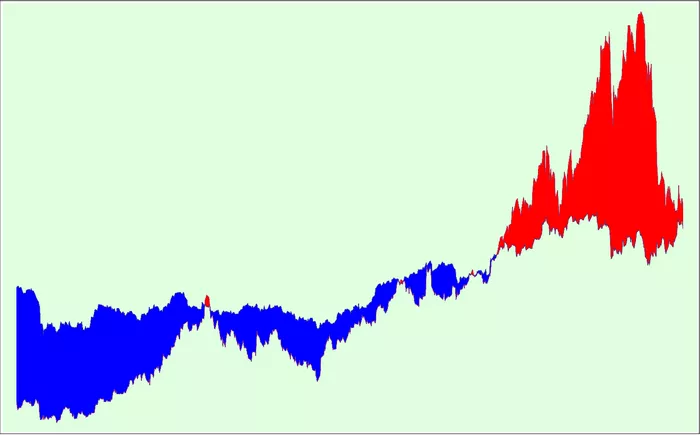Preferred stocks are an attractive investment choice for income-seeking investors due to their fixed dividends and preferential treatment over common stocks in terms of dividend payments. However, understanding how often these dividends are paid and the factors influencing dividend schedules is essential for making informed investment decisions.
In this article, we will explore the basics of preferred stocks, how dividends are paid, and the factors that influence dividend payouts. We will also discuss common schedules for dividend payments and the potential risks and benefits associated with investing in preferred stocks.
What Are Preferred Stocks?
Preferred stocks are a unique type of equity security that combines characteristics of both stocks and bonds. While they represent ownership in a company, preferred stockholders have a higher claim on the company’s assets and earnings than common stockholders. This makes preferred stocks a more stable investment option for those seeking consistent income.
Key Features of Preferred Stocks
Dividend Priority: Preferred stockholders have priority over common stockholders when it comes to receiving dividends. In times of financial difficulty, companies must pay preferred dividends before paying dividends to common shareholders.
Fixed Dividend: Most preferred stocks come with a fixed dividend rate, meaning the amount of income they provide is consistent and predictable.
No Voting Rights: Unlike common stockholders, preferred stockholders typically do not have voting rights in the company’s major decisions, such as mergers or electing the board of directors.
Preferred stock dividends are often seen as a stable income stream because of their priority over common stock dividends and their fixed nature.
How Often Do Preferred Stocks Pay Dividends?
The frequency of dividend payments for preferred stocks generally depends on the terms set by the issuing company. Typically, preferred stock dividends are paid on a quarterly, semi-annual, or monthly basis. However, quarterly payments are by far the most common.
Common Dividend Payment Schedules for Preferred Stocks
Quarterly Payments
The most typical dividend schedule for preferred stocks is quarterly. This means that preferred shareholders receive payments four times per year, typically at the end of each fiscal quarter.
Quarterly dividends provide investors with a consistent income stream, which is one of the main reasons why investors favor preferred stocks.
Example: A preferred stock paying a $1 dividend per share annually might pay $0.25 each quarter.
Semi-Annual Payments
Some preferred stocks pay dividends twice a year, generally on a semi-annual schedule. This means investors receive a larger payment each time, but less frequent.
Semi-annual payments are common in certain international markets or for specific types of preferred stocks, especially for preferred shares issued by foreign companies.
Example: A preferred stock with a $2 annual dividend might pay $1 every six months.
Monthly Payments
Less common, but still available, some preferred stocks may pay dividends monthly. This structure is typically found in real estate investment trusts (REITs) or other specialized investment vehicles.
Monthly dividends are attractive to investors who prefer a steady and predictable income flow.
Example: A preferred stock with a $12 annual dividend might pay $1 every month.
Factors Influencing the Dividend Payment Schedule
Several factors can influence how often dividends are paid on preferred stocks, and these can vary depending on the issuing company, the nature of the stock, and market conditions.
Company’s Financial Health and Cash Flow
The most significant factor affecting dividend payments is the company’s ability to generate profits and maintain a strong cash flow. If a company faces financial difficulties, it may delay or reduce preferred stock dividends, even if they are technically “due.”
Preferred stock dividends are typically not tied to a company’s earnings in the same way that common stock dividends are. However, if a company faces severe financial trouble, it may prioritize its obligations to creditors over dividend payments.
Dividend Policy
The issuing company determines the payment schedule based on its dividend policy. Some companies, particularly those in stable, cash-generating industries like utilities or telecommunications, prefer to pay dividends on a regular schedule, such as quarterly or annually.
Other companies may prefer to adjust their dividend policy over time, depending on business performance or changes in market conditions.
Preferred Stock Type
Cumulative Preferred Stock: This type of preferred stock ensures that if the company misses a dividend payment, it must pay it in full before any dividends are paid to common stockholders. In such cases, missed dividends accumulate over time and are paid once the company is financially capable.
Non-Cumulative Preferred Stock: On the other hand, if a company misses a dividend payment on non-cumulative preferred stock, the missed dividend is not owed in the future. The company is not required to pay those dividends later.
Economic and Market Conditions
During times of economic uncertainty or market volatility, some companies may delay or suspend their preferred stock dividends to conserve capital or manage debt levels. For example, during the COVID-19 pandemic, many companies temporarily suspended dividend payments, including those on preferred stocks, in response to financial instability.
Dividend Yield vs. Dividend Frequency
The dividend yield is another important consideration for preferred stock investors. The yield is a measure of the annual income generated by the preferred stock, expressed as a percentage of its current market price. It is calculated by dividing the annual dividend payment by the stock’s market price.
While the dividend frequency (quarterly, semi-annually, or monthly) affects how often you receive payments, the yield tells you how much income you can expect from the stock over a year. For example, a stock paying quarterly dividends might have a lower dividend payment per period but offer the same overall annual yield as a stock with semi-annual payments.
Investors should understand both yield and payment frequency when evaluating preferred stocks, as both impact the total income they can expect from their investments.
Benefits of Preferred Stocks and Their Dividends
Preferred stocks are generally attractive to income-focused investors due to their stable and predictable dividend payments. Here are some benefits of investing in preferred stocks for dividend income:
Consistent Income Stream
One of the key advantages of preferred stocks is their ability to provide a reliable income stream. Preferred stocks typically pay higher dividends than common stocks, and those dividends are often fixed, making them more predictable for investors.
Priority Over Common Stock Dividends
In the event that a company faces financial difficulties and cannot pay dividends to common shareholders, preferred stockholders have a higher priority for dividend payments. This provides an additional layer of security for preferred stock investors.
Potential for Capital Appreciation
While preferred stocks are primarily designed to generate income, they can also offer capital appreciation. If a company’s financial health improves or market conditions become more favorable, the price of preferred stocks may rise, leading to potential capital gains for investors.
Tax Advantages
In some jurisdictions, dividends paid on preferred stocks may be subject to more favorable tax treatment compared to interest income from bonds. This makes preferred stocks an attractive investment for tax-sensitive investors.
Lower Risk Compared to Common Stocks
Preferred stocks are generally less volatile than common stocks, as they tend to be less affected by market swings. This lower risk profile, combined with consistent dividends, makes them a popular choice for conservative investors.
Risks Associated with Preferred Stock Dividends
While preferred stocks offer many benefits, there are also some risks that investors should be aware of when it comes to dividend payments:
Dividend Suspension
While preferred stock dividends are generally more stable than common stock dividends, they are not guaranteed. Companies facing financial distress may suspend preferred stock dividends, especially on non-cumulative preferred stock.
Interest Rate Risk
Preferred stocks are sensitive to changes in interest rates. If interest rates rise, the value of existing preferred stocks may fall, as new issues may offer higher yields. This can impact the total return for investors.
Credit Risk
If the issuing company faces credit difficulties, there is a risk that it may not be able to pay dividends or even fail to meet its obligations to preferred stockholders. This risk is higher for companies with lower credit ratings or in volatile industries.
Liquidity Risk
Preferred stocks may be less liquid than common stocks, especially if they are not widely traded. This can make it harder for investors to sell their preferred shares without affecting the price.
Conclusion
Preferred stocks are a valuable investment tool for income-seeking investors, offering relatively stable and predictable dividend payments. Most preferred stocks pay dividends on a quarterly basis, although semi-annual or monthly payments are also possible. The frequency and amount of these payments depend on the issuing company’s financial health, dividend policy, and market conditions.
Investors should carefully consider the factors that influence preferred stock dividend payments, including the company’s financial performance, interest rate trends, and the type of preferred stock being issued. While preferred stocks offer many benefits, they also come with risks, such as dividend suspension and interest rate sensitivity.
By understanding the dividend schedules, yields, and risks associated with preferred stocks, investors can make more informed decisions that align with their financial goals and risk tolerance. Whether seeking stable income or a balance between risk and return, preferred stocks offer a reliable option for investors looking to enhance their portfolios.
Related topics:

























